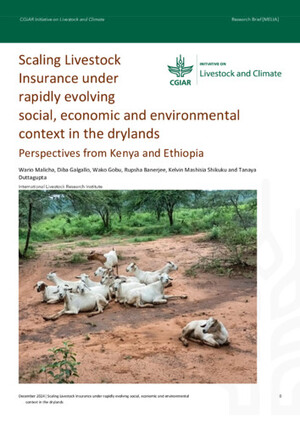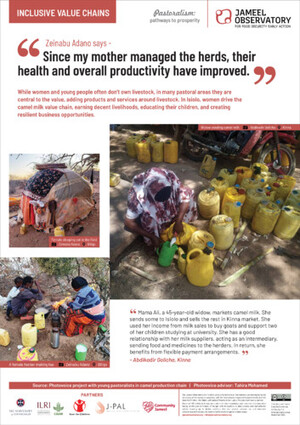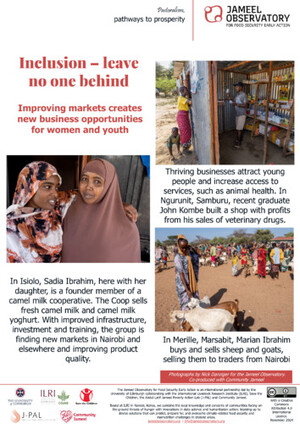
Open property and complex mosaics: Variants in tenure regimes across pastoralist social-ecological systems
Abstract
While it has repeatedly been observed that pastoralist resource governance systems tend not to conform to the assumptions and principles of mainstream scholarship on property rights and governance of commons, coherent theoretical reasons why this is the case are less common. One exception is the concept of open property regimes. This view holds that the quintessential features of dryland pastoralist systems—limited and highly variable rainfall, low resource density, mobility, and institutions and norms that emphasize flexibility and access—can result in pastoralist herders dynamically distributing and redistributing themselves across a territory without the assumed benefit of clear boundaries or of collective decision-making and rules. However, the open property regimes explanation describes some pastoralist systems better than others. This paper argues that some pastoralist systems are neither conventional commons nor open property regimes. Instead they tend reflect another model, referred to here as a complex mosaic regime, in which there is gradation of strength and clarity of exclusionary property rights over different resources, in which property rights are often unbundled and allocated to different actors and governance mechanisms, and in which a prominent role is played by social processes and governance mechanisms other than property rights institutions. Social and biophysical characteristics that may be more conducive to complex mosaic regimes than to open property systems, particularly if all of those characteristics are found together, include a severe and chronic shortage of one or more critical resources, spatial heterogeneity of resources, scalar heterogeneity of interests, and a herd mobility pattern that involves occasional convergence on highly valued key resource areas. In elaborating the complex mosaic regime model, this paper addresses a blind spot in scholarship on property rights and commons, deepening the understanding of why pastoralist systems tend not to conform to mainstream theory, as well as helping to explain some of the differences among pastoralist systems. Understanding the internal logic of alternative resource governance regime models and the social-ecological conditions that make one model more viable than another can help to guide national policies and the strategies of conservation and development actors.
Citation
Robinson, L.W. 2019. Open property and complex mosaics: Variants in tenure regimes across pastoralist social-ecological systems. International Journal of the Commons 13(1):1–23.










